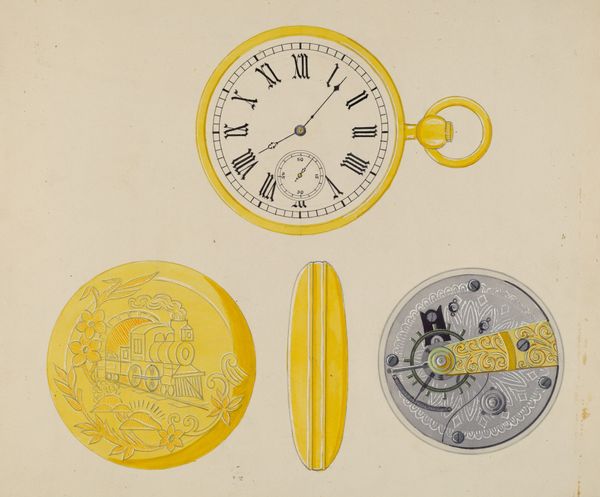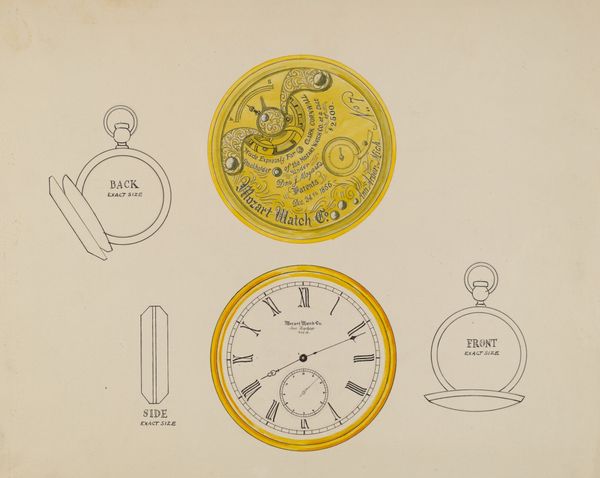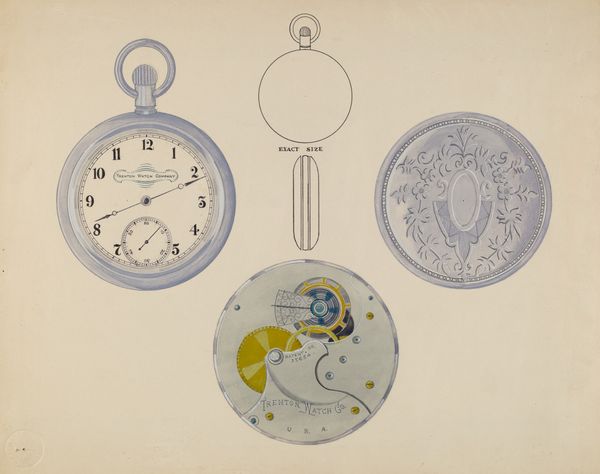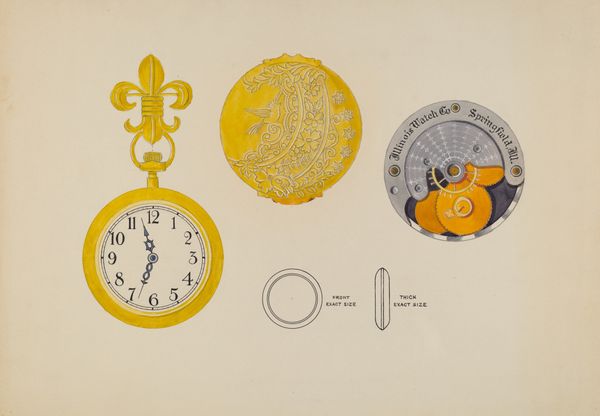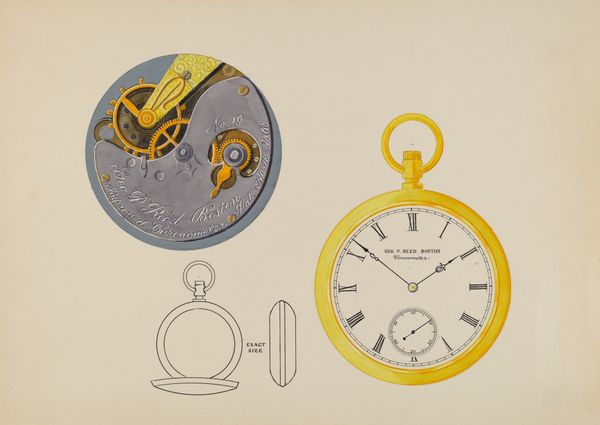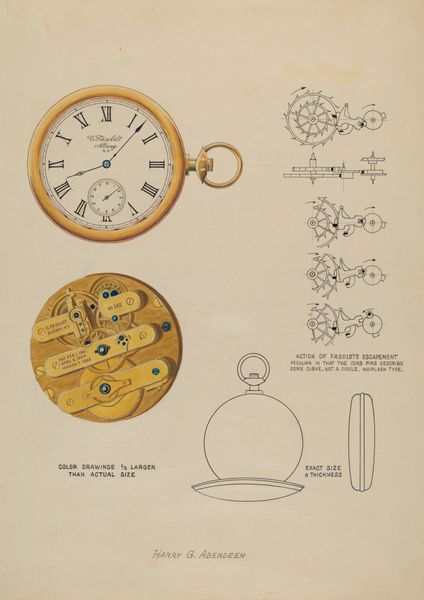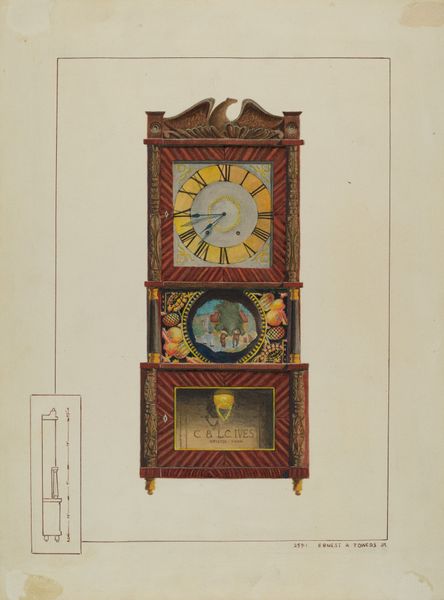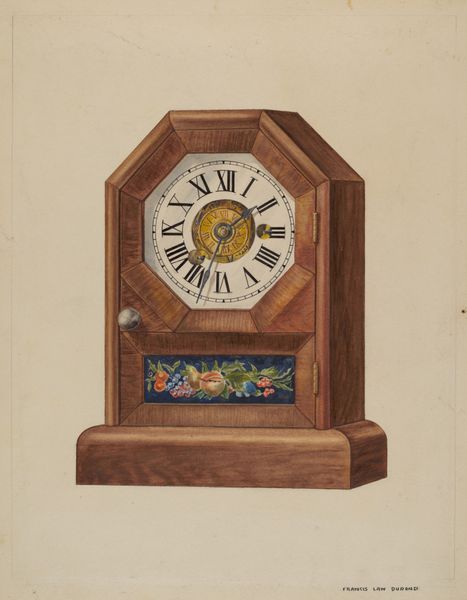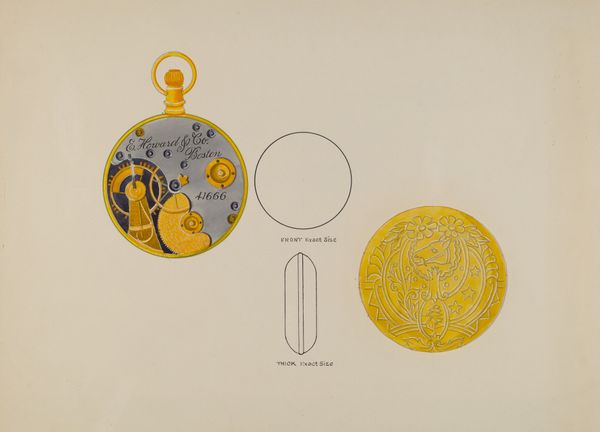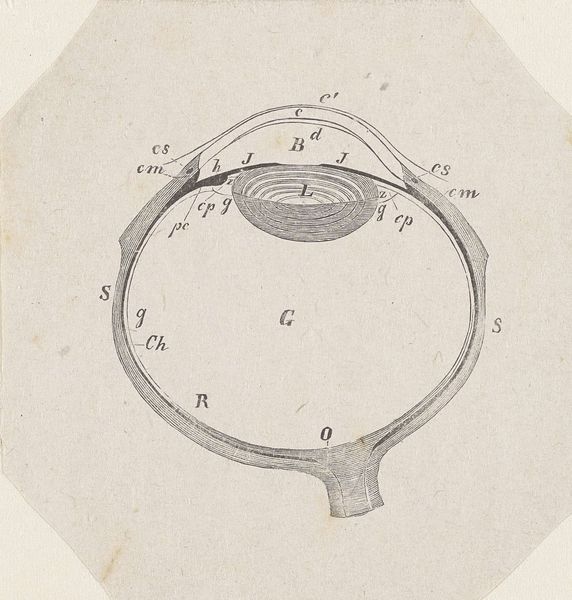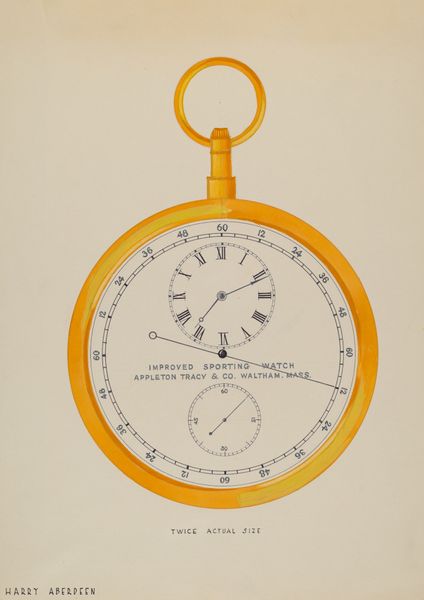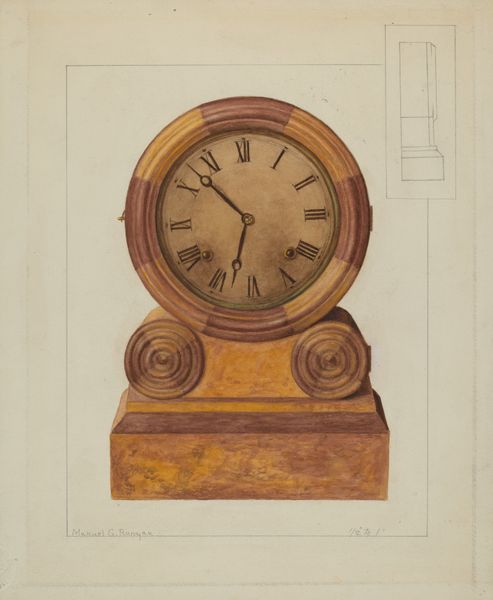
drawing, watercolor
#
drawing
#
watercolor
#
watercolour bleed
#
watercolour illustration
#
watercolor
Dimensions: overall: 24.5 x 33.4 cm (9 5/8 x 13 1/8 in.)
Copyright: National Gallery of Art: CC0 1.0
Curator: I’m struck by the precision of this watercolor and ink drawing, "Gold Watch with Frame and Case," dating to around 1936. There's such detail rendered of this object in this drawing. What are your first impressions? Editor: There’s a quiet industriousness about this piece. It makes me think about factories, drafting tables, and skilled labor. It's quite removed from how we typically consider "art." Curator: Indeed. It's fascinating to consider this piece in its historical context. During the 1930s, a gold watch wouldn't just tell time; it was a powerful emblem of social status, reliability, and adherence to schedules dictated by factories, industries, and burgeoning economic systems. Does this object hold significance in today’s world? Editor: Definitely less so! Now it seems an indulgence. But then, you see the close attention to material – gold leaf accents, the gleaming inner mechanics, the case – all indications of careful manufacturing. These things carry historical significance as technologies shift. You also get a view to a very crafted object of the period. Curator: Exactly. There is more than just attention to its making; the imagery also carries its own meaning. Look at the back of the case design with the stag motif. The stag is a prominent figure in Celtic, Nordic, and even Greco-Roman myths; an iconographic shorthand for themes like wilderness, virility, and independence. Perhaps there is the symbolism of the gold being connected to value, the stag connected to social standing. The connection with gold almost serves as an analogy. Editor: Interesting connection! This feels very American; all the images reflect American culture as a country finding its own language around industrial growth and nature. It's about both the raw materials and their social meaning. I almost wonder who its maker or manufacturer was and if that speaks more to the kind of symbolism embedded in the artwork. Curator: All of this discussion circles back to time, its constructedness, and how something as functional as a timepiece can carry the weight of aspiration and belonging. Editor: Yes, both physically and symbolically constructed; from its individual components to its collective meanings!
Comments
No comments
Be the first to comment and join the conversation on the ultimate creative platform.
